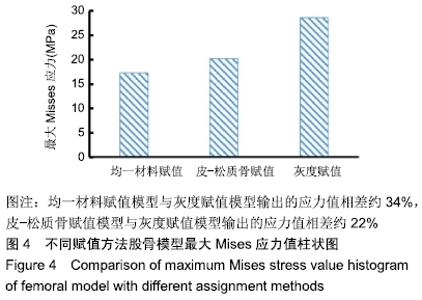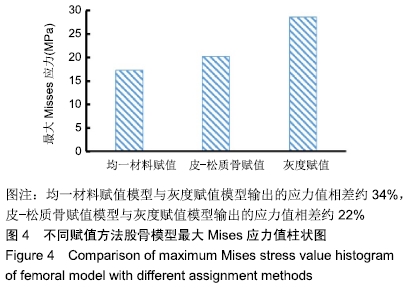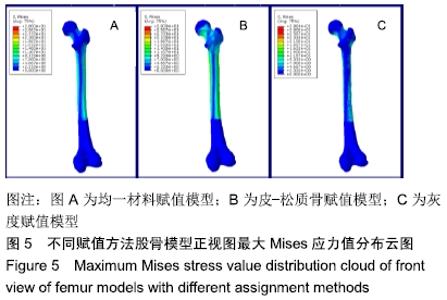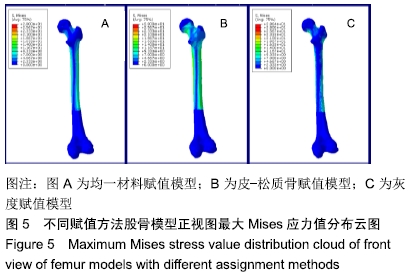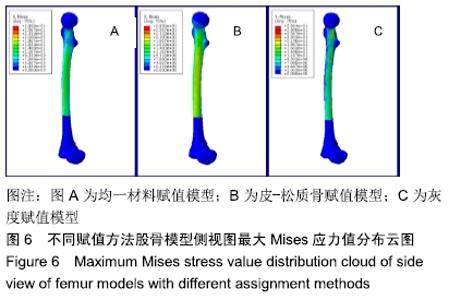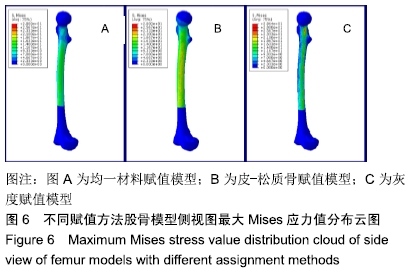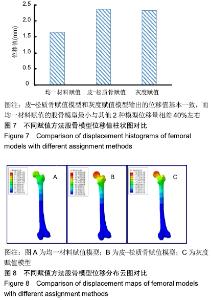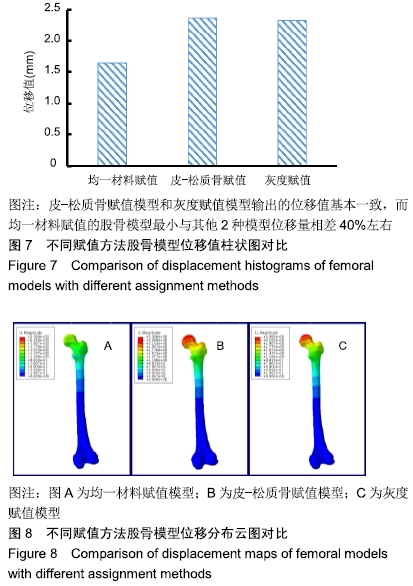[1] 曾羿,沈彬.数字化骨科技术在关节置换术中的应用[J].中华骨科杂志, 2013,33(9):961-964.
[2] 黄鹏宇,朱永清,何炳蔚,等.虚拟现实与3D打印技术在牙种植领域的应用研究[J].现代信息科技,2019,3(2):162-164.
[3] 黄山,李祥志.胸腰椎骨折前路手术中导针定位椎体螺钉置入[J]. 创伤外科杂志,2019,21(1):26-31.
[4] 韩康,赵廷宝,卞娜,等.人工腰椎间盘置换研究应用进展[J].现代生物医学进展,2014,14(34):6745-6750.
[5] RO J, KIM P, SHIN CS. Optimizing total hip replacement prosthesis design parameter for mechanical structural safety and mobility. Int J Prec Engin Manuf. 2018;19(1):119-127.
[6] 刘安庆,张银光,王春生,等.人股骨生物力学特性的三维有限元分析[J]. 西安交通大学学报(医学版),2001,22(3):242-244.
[7] JAIN P, KHAN MR. Biomechanical study of fused lumbar spine considering bone degeneracy using FEA. Arab J Sci Eng. 2017; 43(3):1-10.
[8] 钟世镇.创伤骨科基础研究有关新进展[J].中华创伤骨科杂志,2002, 4(2):81-83.
[9] 陈国栋,罗羽婕,王锐英.有限元分析在股骨生物力学研究中的应用[J]. 实用医学杂志, 2011,27(2):334-336.
[10] 李苏皖,卜海富,何仿,等.正常双腿站立位股骨上段应力分布的三维有限元分析[J].临床骨科杂志,2003,6(1):1-4.
[11] 汪金平,杨天府,钟凤林,等. 股骨生物力学特性的有限元分析[J].中华创伤骨科杂志, 2005,7(10):931-934.
[12] 骆健,王立华,王涛,等.不同材料赋值方法下踝关节三维有限元模型的应力及位移变化[J].中国组织工程研究,2019,23(18):2822-2826.
[13] 唐勇涛,唐勇涛,魏思奇,等.基于两种不同建模方式的胫骨有限元对比分析[J].中国骨科临床与基础研究杂志,2016,8(1):26-32.
[14] ADACHER L, GEMMA A. A robust algorithm to solve the signal setting problem considering different traffic assignment approaches. Int J Appl Math Comp Sci. 2017;27(4):815-826.
[15] 刁小明,尹洪国,朱伟民,等.人股骨弹性模量与泊松比测定试验研究[J].工程与试验,1998,38(1):91-92.
[16] 陈瑱贤.个体化全膝关节置换的骨肌多体动力学建模方法及应用研究[D].西安:西安交通大学,2016.
[17] 许杰,马若凡,蔡志清,等.成人髋臼发育不良伴骨关节炎行髋臼结构性植骨重建关节置换术的力学分析[J].中华关节外科杂志(电子版),2014, 8(5):618-623.
[18] COMPLETO A, DUARTE R, FONSECA F, et al. Biomechanical evaluation of different reconstructive techniques of proximal tibia in revision total knee arthroplasty: an in-vitro and finite element analysis. Clin Biomech. 2013; 28(3): 291-298.
[19] CHARALAMPOS B, KERNER J, FISHER I, et al. The effect of muscle loadingon the simulation of bone remodelling in the proximal femur. J Biomech. 2005;38(1):133-139.
[20] 谢亮文.不同属性建模方法对股骨近端有限元分析影响的研究[D]. 福州:福建医科大学,2015.
[21] 王颖,刘志朋,殷涛,等.利用有限元探究内固定治疗股骨颈骨折的生物力学研究[J].中国中西医结合外科杂志,2019,25(1):56-61.
[22] XU M, PENG D. Mesenchymal stem cells cultured on tantalum used in early-stage avascular necrosis of the femoral head. Med Hypotheses. 2011;76(2): 199-200.
[23] 张舒,吴兴裕,李莹辉.骨骼的功能适应性与应力应变反应[J].航天医学与医学工程,2001,14(5):368-372.
[24] FROST HM. From WolfFs Law to the Utah paradigm: insights about bone physiology and its clinical applications. Anat Rec. 2001;262(7): 398.
[25] 臧建成,秦泗河.从Wolff定律和Ilizarov张力-应力法则到骨科自然重建理念[J].中国骨伤,2013,26(4):287-290.
[26] SAMIEZADEH S, TAVAKKOLI AP, FAWAZ Z, et al. Biomechanical assessment of composite versus metallic intramedullary nailing system in femoral shaft fractures: A finite element study. Clin Biomech. 2014;29(7):803-810.
[27] OSHKOUR AA, OSMAN NAA, BAYAT M, et al. Three-dimensional finite element analyses of functionally graded femoral prostheses with different geometrical configurations. Mater Design. 2014;56(56): 998-1008.
[28] 王凯.三维有限元分析在骨科中的应用[J].生物骨科材料与临床研究, 2013, 10(1):31-34.
[29] 陈蕾,李江伟,郑明.腓骨高位截骨对膝关节应力改变的三维有限元分析[J].中国骨与关节损伤杂志,2018,33(6):583-585.
[30] 倪鹏辉,张鹰,杨晶,等.临床骨科中应用的有限元分析法:新理论与新进展[J].中国组织工程研究,2016,20(31):4693-4699.
[31] AFSHAR M, ANARAKI AP, MONTAZERIAN H, et al. Additive manufacturing and mechanical characterization of graded porosity scaffolds designed based on triply periodic minimal surface architectures. J Mech Behav Biomed Mater. 2016;62: 481-494.
[32] 廖红兴,邹学农,黄健,等.个体化术前模拟截骨在全膝关节置换胫骨平台假体选择中的应用[J].中国组织工程研究,2016,20(4):470-475.
[33] MEHBOOB H, TARLOCHAN F, MEHBOOB A, et al. Finite element modelling and characterization of 3D cellular microstructures for the design of a cementless biomimetic porous hip stem. Mater Design. 2018; 149:101-112.
[34] 李海峰,亓玉彬,李强,等.老年人股骨颈骨折手术治疗进展[J].中国老年学,2013,33(3):721-723.
[35] 时述山.股骨颈骨折[J].中国矫形外科杂志,2004,12(20):1596-1598.
[36] 王军强,樊瑜波.计算机辅助骨科手术技术将改善股骨颈骨折治疗[J]. 中国骨伤,2018,31(2):99-102.
[37] 许杨.基于定量超声的皮质骨和松质骨骨强度评价方法研究[D].合肥:中国科学技术大学,2016.
[38] 董鹏飞,雷建银,刘海波,等.基于CT图像的股骨上段有限元建模及单元尺寸分析[J].医用生物力学,2016,31(2):129-134.
[39] 欧阳汉斌,谢普生,邓羽平,等.基于CT灰度赋值的有限元模型建立及其在截骨矫形中的应用[J].南方医科大学学报,2016,36(7):979-983.
|
